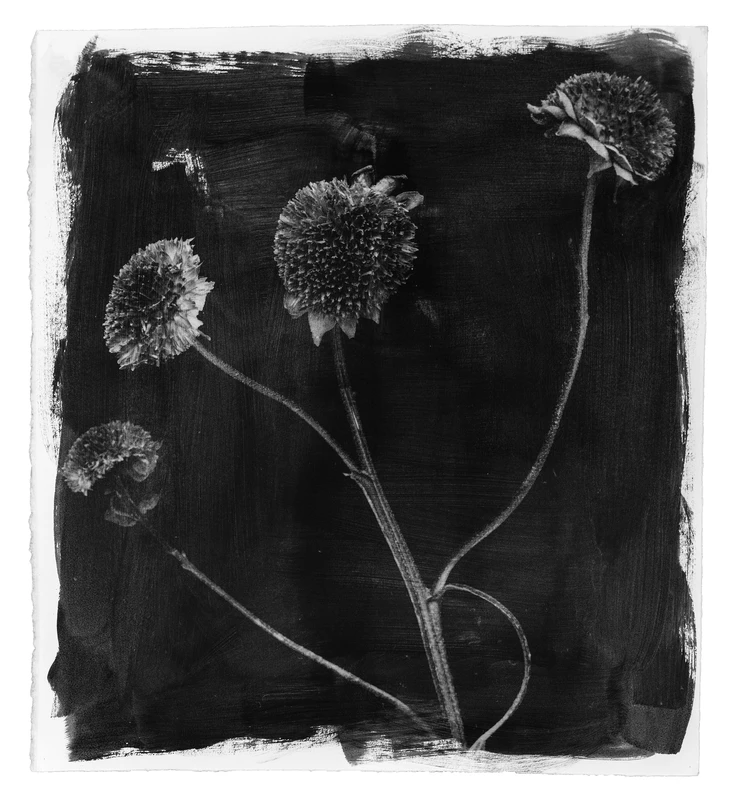Stephen Inggs: Botanical Legacies
19 Apr-27 May 2023
PV 19 Apr 2023, 6-8pm


HackelBury is pleased to present Botanical Legacies, a solo exhibition by South African artist Stephen Inggs.
Inggs’ work focuses on material objects which become symbols of transience and history. His images of flowers are beautiful but belie more sombre themes around colonialism and migration. Inggs is interested in the ‘archaeology of identity’ and how ‘the emblems of cultural history and the circulation of objects’ are given new meanings.
Inggs creates his large-scale black-and-white artwork by hand, using silver gelatin emulsion on cotton rag paper to create a painterly effect giving the work a timeless quality. The soft tactile nature of the watercolour paper acts as a trompe l’oeil, blurring the boundaries between photography, drawing and printmaking. This reflects his concern with the ‘dematerialisation of the digital age’ and his need to be involved in the physical making of an image, not simply reproduce one.
His contemporary still lifes are intended to ‘slow-down time’ and allude to the historical vanitas still-life paintings which were woven with allegories around the transience of life, the passing of time and human fragility. This ‘disguised symbolism’ creates a pictorial language in which an ordinary object can convey a deeper meaning, often touching on culture, politics and society.
Inggs grew up in South Africa in the Western Cape surrounded by vineyards and farms. His interest in the environment is a recurring theme. With Botanical Legacies, he explores the relationship that flowers have with our everyday life. The flora he chose to photograph are deliberate and considered. They range from the protea, an indigenous flower which is the symbol of South Africa, to the hydrangea, an invasive species from Asia, and the rose – brought to South Africa by the first Dutch settlers and planted as an early warning system to alert the farmer to aphids before they reach the vines.
Inggs is strongly influenced by the notion of rhopography – ‘the depiction of those things that lack importance’ – and the writings of Norman Bryson in which he says ‘painting is an art made not only of pigments on a surface, but of signs in semantic space’. For Inggs, the photographic still life takes on the exploration of what ‘importance tramples underfoot.’
Inggs uses ubiquitous flowers and plants to explore these complex issues around colonialism, migration, land ownership and ecology. For him, the ‘garden becomes the site of cultural critique’.